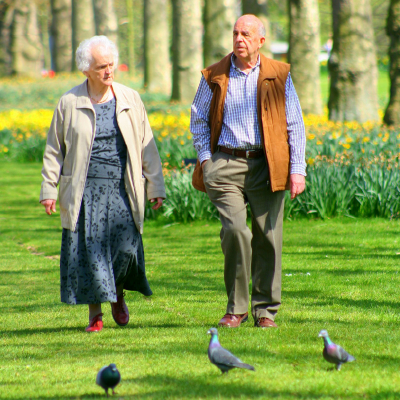The DALi project aims at extending the people autonomous life beyond the home
Objectives
Scientific and Technological Objectives
The DALi project has undertaken a challenging agenda aimed at extending the people autonomous life beyond the home. The environment where the system operates is partially known (due to its large variability) and changing. Our assisted living device system must therefore acquire dynamic information about the user’s immediate environment in order to guide its decision-making. The construction of a system of such complexity represents a major scientific and technological effort bringing together expertise across different disciplines. We can coarsely identify three principal areas where the effort of DALi’s research team has introduced innovation.
Area 1: User Sensitive Development.
For a project like DALi, it is imperative to capture the essential requirements of potential users of assisted living devices and codify these as engineering constraints. Of particular importance is user-acceptance to minimise the stigma associated with dependency on external devices for daily functioning, and maximise the adoption rate of technological platforms for assisted living. In this context, we have:
1. proposed and validated new techniques that simplify the elicitation of requirements from a class of users, typically unfamiliar with ICT and ensure the constant engagement of the users throughout the development;
2. explored ways that allow us to break down psychological barriers against the evaluation of low-fidelity prototypes and to carry out a preliminary user evaluation of our prototypes.
 Area 2: Models and Algorithms.
Area 2: Models and Algorithms.
This area embraces the models and the algorithms that enable our system to acquire environmental information and take decisions, interpreting and respecting the social and psychological dynamics of human environments. The specific problems that we have been addressing are:
1. localisation of the system inside the space where it operates; this activity entails both the construction of a 2D map of the environment and the localisation inside the map;
2. short range situation assessment; this activity consists of fusing the various information from the sensors to reconstruct all the elements in the surrounding environment required to make decisions (position and attitude of obstacles and human agents, presence of landmarks, intent of the AP);
3. modeling of the dynamics of human motion; we have been studying the psychological and sociological mechanism that govern human motion in crowded environments, identify the physical expression that can telegraph the intent of a person and translate it into a mathematical model;
4. automatic detection of anomalies from the long term observation of a scene from multiple viewpoints;
5. efficient motion planning in crowded environment: we are using the mathematical model describing the context where the system operates to decide a route that controls the probability of having accidents;
6. control algorithms for non–wearable haptics: we need control algorithms that make the motion of the robot compliant in the directions identified by the motion planner;
7. acoustic synthesis to represent the local environment to the AP via a smart headphone.
Area 3: Technological Infrastructure.
Much of the hardware that we are using (including the robotic platform) integrates off-the-shelf components. This choice is motivated both by cost reasons and by our desire to spend most of our research effort on the novel aspects of cognitive navigation enign. As a result, most of the technological issues in the DALi project are related to the software components and can be listed as follows:
1. development of wearable haptic interfaces;
2. design of a middleware architecture that makes for the seamless integration of the software components deployed across different nodes;
3. design of operating system solutions that enable provision of real-time guarantees to a set of soft real-time applications with a dynamic workload;
4. integration of the system into a working prototype.
 Area 2: Models and Algorithms.
Area 2: Models and Algorithms.